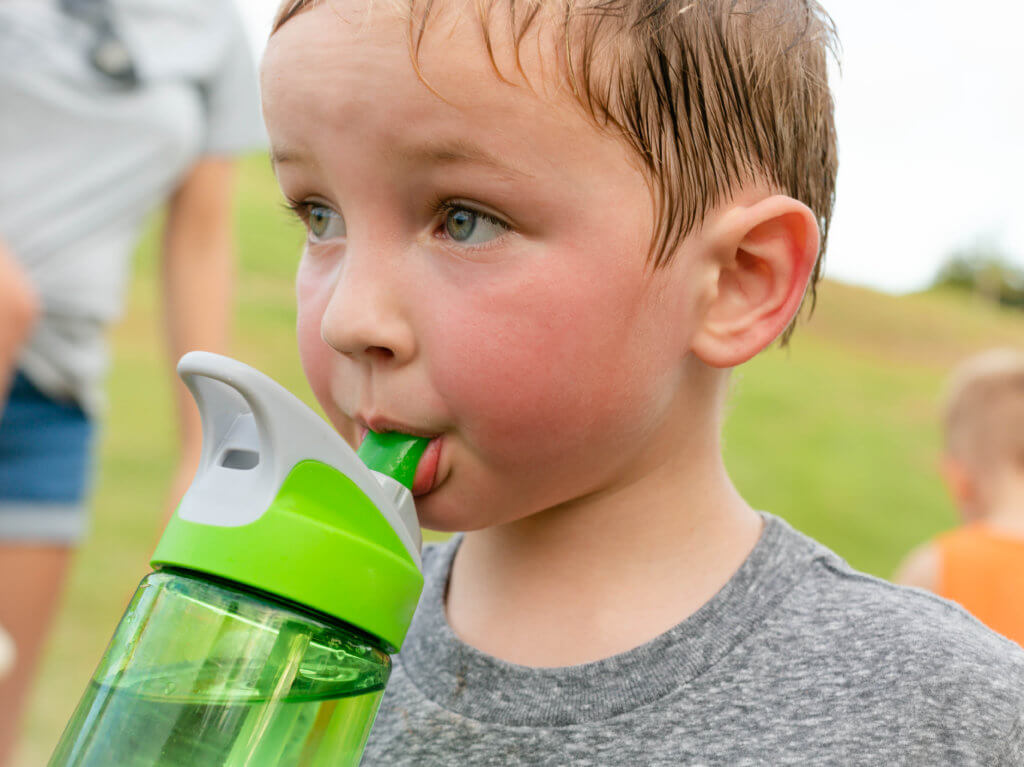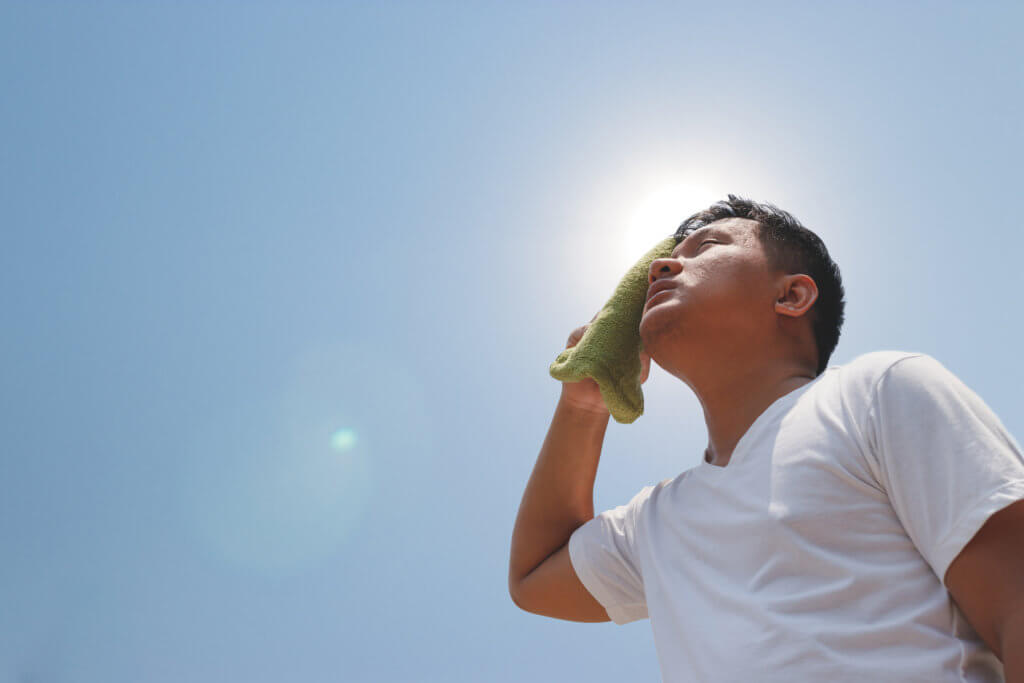How to Prevent Heat Exhaustion
Have you ever wondered if there’s something you could do to stay safe on hot, sunny days? If you know how to prevent heat exhaustion, you could do more than just stay safe — you could save someone’s life.
Some people are diehard winter fans who get excited about roaring fireplaces and steaming mugs of hot chocolate. Others love the first blossoms of spring or changing leaves and crisp fall air. But for the majority of us, summer is the season we most look forward to. What’s not to love about long days filled with sunshine and trips to the beach?
Unfortunately, summer isn’t all about fun in the sun. In fact, the season should probably come with a warning label:
“Caution: High temperatures and elevated humidity increase your risk of heat exhaustion and even heat stroke, which can lead to death.”
We all know how important sunscreen is if you’re spending time in the sun, but heat exhaustion is also extremely serious, and it can cause just as much damage as any sports injury. The risk of heat exhaustion increases as the outside temperature rises to meet your body temperature, and the more risk factors you have the less heat is required to make you sick.
These risk factors include medical conditions like high blood pressure, thyroid disease, and diabetes. Certain medications can also make you more susceptible to heat exhaustion — diuretics, laxatives, benzodiazepines, and medications used to treat blood pressure, allergies, and coughs all increase your risk. If you’re at an increased risk of heat exhaustion it’s especially important to understand the warning signs.
Know the signs, and what to do about them, before heat exhaustion ruins the family trip to Jones Beach State Park, Fire Island National Seashore, and other local beaches.
Heat Exhaustion Warning Signs
 There’s a saying that goes “an ounce of prevention is worth a pound of cure,” and that couldn’t be more true when it comes to heat exhaustion. While serious enough on its own, heat exhaustion is nothing compared to heatstroke.
There’s a saying that goes “an ounce of prevention is worth a pound of cure,” and that couldn’t be more true when it comes to heat exhaustion. While serious enough on its own, heat exhaustion is nothing compared to heatstroke.
Without proper attention and care, heat exhaustion can turn into heatstroke, which can be fatal. Fortunately, there are a few clear signs of heat exhaustion that you can be on the lookout for:
- Headache (especially a throbbing pain)
- Nausea and vomiting
- Flushed skin (which may turn red)
- Rapid, shallow breathing
- Increased heart rate
Heat Exhaustion in Vulnerable Groups
The signs of heat exhaustion in kids are the same, but a child can’t always tell you what’s wrong. Be vigilant with children in the heat and watch for sweating, pale skin, irritability, dizziness, increased thirst, and nausea.
Pregnant women are also more susceptible to heat injuries because they have an elevated body temperature. Symptoms of heat exhaustion during pregnancy include headache, dizziness, warm skin, nausea, and muscle cramps. Pregnant women must be conscious of the risk of heat exhaustion, as it can lead to falls or dehydration, which can trigger Braxton Hicks contractions.
What Is the Difference Between Heat Exhaustion and Heat Stroke?
Understanding how to prevent heat exhaustion is important because heat exhaustion can develop into heatstroke if you don’t act quickly. Heatstroke is the most severe type of heat-related illness. Unlike heat exhaustion, a body in heatstroke can no longer control its temperature, which continues to rise.
 The clearest symptom of heatstroke is a body temperature above 104° F. Other symptoms of heatstroke include:
The clearest symptom of heatstroke is a body temperature above 104° F. Other symptoms of heatstroke include:
- A lack of sweating, even though the person is hot
- A throbbing headache
- Dry, hot, red skin
- Muscle cramps
- Nausea and vomiting
- Dizziness
- Shallow breathing
- Rapid heartbeat
- Confusion or disorientation
- Seizures
- Loss of consciousness
How to Help Someone with Heat Exhaustion
If you see someone exhibiting heat exhaustion symptoms, particularly on a very hot day, it’s important to act quickly. Help move them to a cool room indoors or into a shady area out of the sun, loosen any tight or restrictive clothing, give them cool water to sip, and get them to lie down and rest with their legs slightly elevated. Applying ice to the armpits, groin, and neck can also help to bring the body temperature down.
These steps should bring relief. If they don’t, or if you’re with someone who exhibits signs of heatstroke, seek medical care immediately.
How to Prevent Heat Exhaustion
 Heat exhaustion (and heatstroke) sound scary, but they don’t have to put a damper on your summer fun. There are simple steps you can take to make sure you enjoy the sun without becoming ill:
Heat exhaustion (and heatstroke) sound scary, but they don’t have to put a damper on your summer fun. There are simple steps you can take to make sure you enjoy the sun without becoming ill:
- Drink plenty of fluids (particularly water)
- Wear loose-fitting, lightweight clothing
- Wear sunscreen, and take other measures to avoid sunburn
- Pay attention to sun and heat-related warnings on your medications
- Avoid rigorous activities during the hottest parts of the day
- Never leave anyone in a hot parked car
- If you feel yourself becoming overheated, take a break and seek shade
When it comes to avoiding heat exhaustion, a little common sense goes a long way. Stay smart and enjoy your summer!
Do you have questions about heat exhaustion, or any other issue related to sports medicine? The physicians and staff of South Island Orthopedics are very experienced in a wide range of orthopedic conditions and are committed to providing personalized care in a state-of-the-art facility.
To schedule an appointment, please call our locations in Cedarhurst (516-295-0111), or Rockville Centre (516-665-9200). Our convenient online contact form is also available by clicking here.
Posted in: General & Pediatric Orthopaedic Care, Sports Medicine
